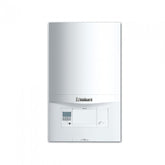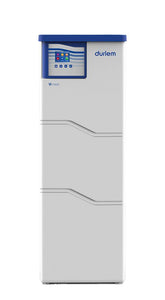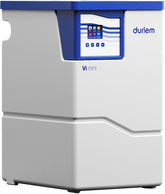Should I put a casing in my chimney if I change my boiler?
Should I put a casing in the chimney if I change my boiler?
Lining (also called sheathing or lining) consists of inserting a tube into the chimney flue in order to improve its performance and better protect it from residues. Regardless of the type of boiler, the casing is unquestionably important .
What is the chimney flue liner used for?
As we said at the very beginning, the casing consists of placing a tube in the flue of a chimney to improve its operation and to better protect it, especially during mechanical sweeping.
More concretely, the tube to be installed will cover the entire duct, from the smoke outlet to the heating device, in order to ensure its tightness.
In addition, the latter protects the conduit against the risk of corrosion or bistres.
That said, lining the flue does not prevent you from having to have your chimney swept at least once a year because, although this will protect you from, for example, tar build-up, the soot will always be present.
However, thanks to this installation, the sweeping work will be facilitated because there will be less residue on the wall.
How is tubing made?
You should first know that there are different types of tubing . So you will find stainless steel tubing, rigid tubing and flexible tubing on the market.
The first 2 give excellent results in terms of safety but also yields, however their cost remains relatively high.
As for flexible tubing, the main advantage is its price (less expensive than the previous ones) as well as its ease of installation.
In all cases, the installation of these tubes is done from the bottom of the conduit upwards, except for the flexible tubing which can also be installed from the roof (recommended).
On the other hand, before starting to install it, you will have to sweep your duct and, if necessary, do a mechanical stripping in order to have a completely clean duct .
Do you have an old fireplace that you want to renovate? So take the opportunity to line your flue.
REQUEST A FREE QUOTE
Lining the flue, for whom?
First of all it should be known that there are certain cases for which the tubing of the conduit is obligatory. Thus, if you have a closed fireplace , an insert or a stove , the flue pipe is mandatory .
On the other hand, if you have an open fireplace, the casing is not mandatory, but rather recommended.
More generally, casing is also mandatory for new installations.
It is very important to know the different types of existing ducts to be able to master this subject.
What are the different types of existing flues?
There are two types of flues: the masonry flue or the metal flue .
The masonry conduit can be made of terracotta, pozzolan concrete or ceramic, while the metal conduit is made of steel or stainless steel.
- The masonry flue
Masonry ducts are not suitable for condensates: the cement of these ducts does not resist the acidity of the water contained in the fumes and the old ducts are not perfectly sealed.
The metal flue
Steel metal conduit will not work either. On the other hand, the stainless steel metal duct is completely resistant to condensates from HPE boilers, so it can be used to evacuate fumes. This stainless steel conduit may be rigid or flexible. Let's also proceed to a classification for a better mastery of the subject.
Duct classification
The flues are characterized according to their use: temperature, pressure, resistance to condensates, resistance to corrosion, resistance to chimney fire and safety distance. In the case of replacement of an appliance by a condensing boiler, it is the resistance to condensate of the flue that interests us: class D or class W.
The letter D represents the ducts that cannot receive wet flue gases from HPE boilers (dry conditions) and W designates the ducts suitable for receiving condensates (wet conditions). These elements are generally indicated on a nameplate located at the foot of the duct. In the absence of a plate, it is recommended to consider that the conduit is class D to avoid any risk.
It is therefore important that a professional check the condition, characteristics and compatibility of this flue.
 Livraison en 72h offerte
Livraison en 72h offerte Paiement à la livraison
Paiement à la livraison Prix imbattables
Prix imbattables Installation TVA 6%
Installation TVA 6%

